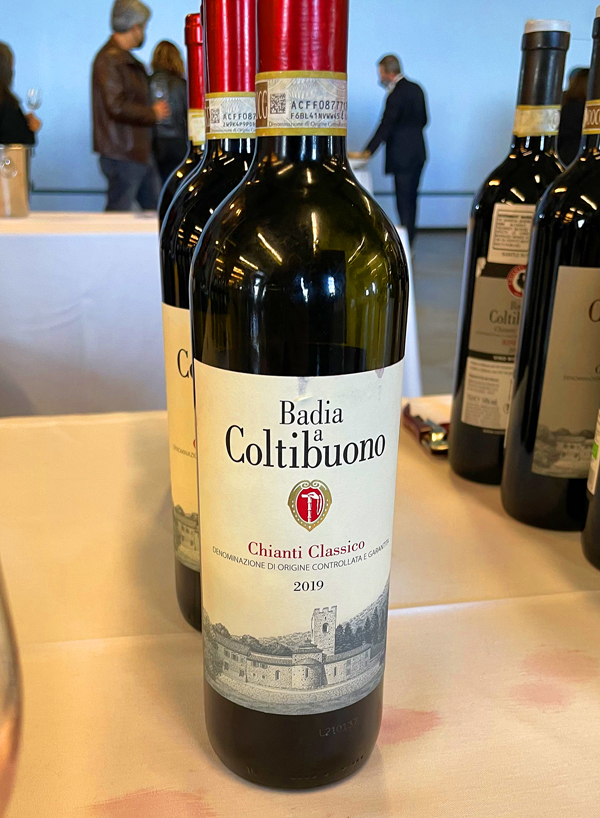2019 Badia di Coltibuono, Chianti Classico DOCG, Tuscany, Italy.
Coltibuono’s 2019 Chianti Classico is bright and fresh, but with solid depth and a rounded mouth feel, allowing for beautiful and charming youthful drinking, it is especially good with simple cuisine, making for a smile filled meal without pretense. The dark garnet and ruby edged Chianti Classico is sourced from all organic estate vines in Gaiole, along with some coming from their Vitignano vineyard (in Castelnuovo Berardenga), with 90% Sangiovese and a 10% mix of Colorino, Canaiolo, and Ciliegiolo going into this wine that was fermented using indigenous yeast in stainless steel tanks. After the wine finishes both primary and malo-lactic fermentation the wine is pressed into large casks, a combination of well used 2,000L and 2,500L French and Austrian oak, where the Chianti Classico matures for 12 months. The 2019 profile is lively and shows lush ripe layers of blackberry, plum, strawberry and mulberry fruits that are accented by hints of pipe tobacco, anise, dried flowers, grilled orange, cinnamon spice, subtle earth, zesty herbs and wood details. This medium bodied Chianti Classico provides enough grip to be taken seriously, but is a comfort wine with its terroir driven Sangiovese personality and authentic style.
The historic Badia a Coltibuono estate, originally founded as an Abbey in 1051, is set in the hills in the Chianti Classico commune of Gaiole, one of the most prestigious parts of the region, not far from Radda, in the southern end of the zone. Coltibuono is now led by the fifth generation of the Stucchi Pirinetti family, including Emanuela, Paolo, and Roberto Stucchi Prinetti. There are 150 acres of vineyards on the property, dug into the clay loam and limestone soils, along with another 50 acres of olive trees here with as excepted a focus on Chianti’s signature grape, Sangiovese of course. The winery notes, Sangiovese is naturally the most important grape variety planted at Coltibuono, but following ancient traditions the family honors Chianti’s heritage by also keeping significant numbers of vines of other native varieties that are allowed but often omitted in the modern Chianti Classico wines. These grapes, planted in very small amounts include the red grapes Canaiolo Nero, Ciliegiolo, Colorino, Foglia Tonda, Malvasia Nera, Mammolo, Pugnitello, Sanforte and the white Trebbiano and Malvasia grapes used for Vin Santo. Badia a Coltibuono makes an authentic collection of wines from the traditional to the more innovative, though I really like this basic Chianti Classico best of all and impressed by its value and ease of use.
($22 Est.) 91 Points, grapelive
